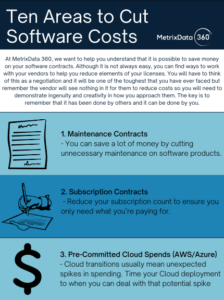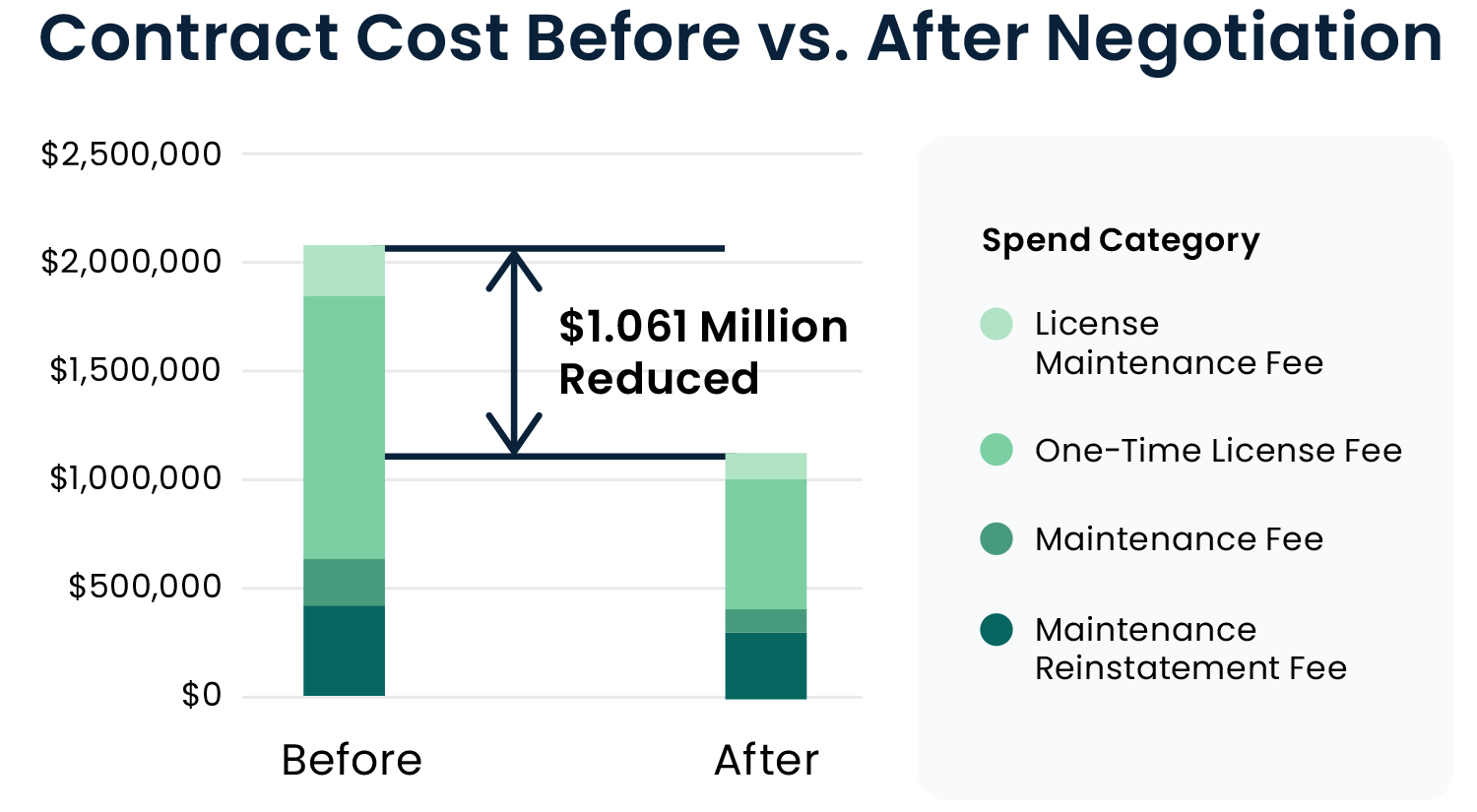Do you feel like you paying too much on software licenses and subscriptions?
If you’re feeling confused about how they bundle products and what features and functions that your users are actually using, you’re not alone.
Imagine if you had the data to find a way to reduce your subscriptions by 12% and 35%. How impactful would that be on your IT Budget?
If you have subscriptions, you are likely spending more than you need to be. We have analyzed over 2 million of our customer’s subscriptions and have seen results that the average company is spending anywhere between 12% and 35% more than they need to.
We’ve extracted the biggest savings areas and compiled them in this list.
Fill out the form to see the top 10 areas to cut software costs.

Success Story
We recently had a mid-tier American Insurance company of roughly 2,000 employees come to us, much to the disgruntlement of their IT department. Their Software Asset Management team was worried that their software environment was becoming too disorganized, but the IT department was confident they had everything under control. After conducting a review of 20 vendors, we gave our client our findings.
- Oracle held the largest compliance issue, being known as a company that is easy to fall out of compliance with.
- The review of the Oracle software produced a compliance gap of $1.5 million USD.
- The reasons for this were issues surrounding the virtualization of Oracle software. Essentially, when putting multiple Oracle products on a single server (in this case it was an IBM server), you must be able to prove to Oracle that any given Oracle product is only using a small portion of the server or else the whole server must be licensed for that product (which is far more expensive).
- Being unable to prove that their Oracle products were only using a small portion of the server, they were forced to license the whole server for every Oracle product, which was more than doubled the licenses that they required (and was also double the licenses that they actually had).
- In addition to this main issue, we also discovered that the client had deployed optional Oracle products that the client had assumed were a free addition but, they needed a license for it.
- Working with a shocked IT department, we showed them how to reconfigure their Oracle products so that they could eliminate that 1.5 million USD compliance gap.
- Should an Oracle audit ever occur for our client, Oracle will find a polished and completely compliance gap-free software environment regarding Oracle products.
- In regard to the optional products that they needed a license for, we informed them of which licenses they required, and they are currently in the midst of either uninstalling or purchasing licenses for these products.



